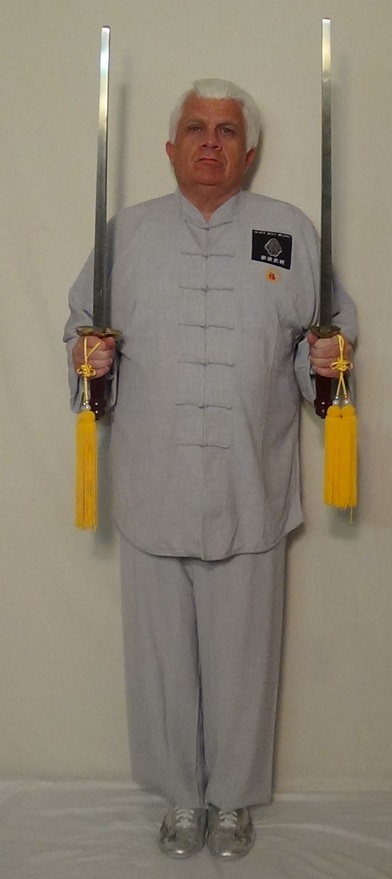
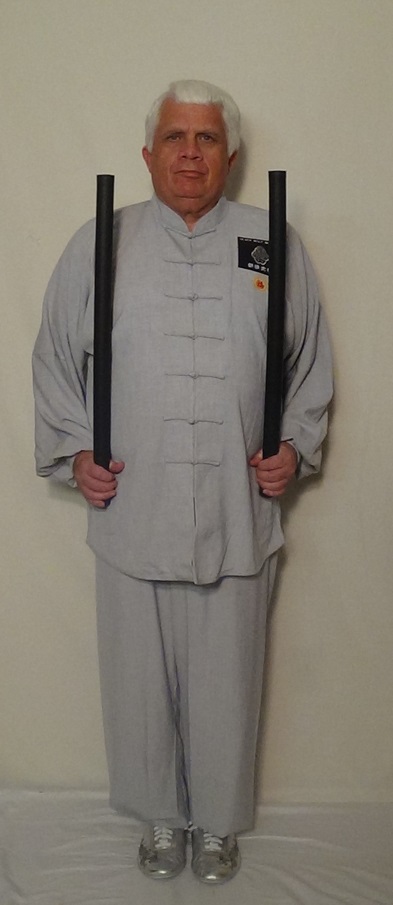
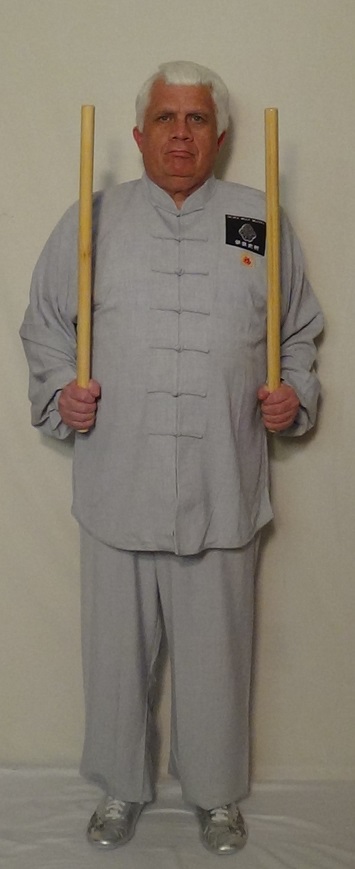
Chen Family style Tai Chi Chuan - In November of 1978 Vice-Chairman Deng Xiaoping brushed some calligraphy for a visiting Japanese delegation: "Tai Chi is good". This caused a significant change in how martial artists, especially Tai Chi Chuan teachers, were treated. It is always difficult to completely interpret Chairman Deng, but he likely saved many lives as well as many arts. The Chinese Government Ministry of Sport has wide-ranging responsibilities: one was to standardize sets within martial arts so that graduates of sports universities and competitors and even everyday citizens all performed the same movements. Our curriculum closely follows what a young Chinese adult majoring in Chen Family style Tai Chi Chuan at a sports university would need to show proficiency in. In competition in order to become a National Champion one must obtain gold medals in one unarmed set, one weapons set and pushing hands (light sparring). For several reasons we will NOT be teaching pushing hands even though I agree it is a very useful practice. What was required was 16 sets of standardized canonical movements to earn a collegiate bachelor's and master's degrees. Then and now, Chen Family style was the only internal art with at least 16 sets with international standards.
We teach the following: 18 Movements (a short form composed especially by Grandmaster Chen Zhenglei - he is very fond of seeing it performed. For a medium quality YouTube recording of him performing it check https://www.youtube.com/watch?v=U5tIEPaMHZM), Lao Jia (literally, 'old frame' - the signature unarmed form); Xin Jia ('new frame' a major revision of Lao Jia pioneered by Chen FaKe in Beijing in the 1920s); double batons (also known as maces - shown below); single saber; single sword; eyebrow height staff and spear for a bachelor's degree. For a master's degree: Cannon Fist (sometimes known as Lao Jia #2), Xin Jia #2, Xiao Jia ('small frame'); double sabers; double swords; halberd (Kwan Dao, which is short for General Kwan's Blade), lau gar pole (3 meter long pole) and fork. Some photos below. It is pretty unlikely a student would encounter a Mongol cavalryman on the street, much less be fortunate to be carrying a Kwan Dao. What the weapons are useful for is to teach both respect for space (yours and people nearby) as well as how to project power. Grandmaster Zhu Tiancai is adamant that an hour's training with any long weapon is worth two hours of any other kind of training. Chen Zhenglei doing single sword https://www.youtube.com/watch?v=XwhkskTm2Uc
Chen Zhenglei doing Kwan Dao: https://www.youtube.com/watch?v=gUgy_osa1BI
Chen Huixian (niece of Chen Zhenglei) teaches in the Kansas City area. Here's a short video of her doing the bottlecap challenge - in sandals.
https://www.facebook.com/watch/?v=427009718025127
| steel maces - unsafe; heavy; expensive | We start with just one baton - padded | and work up to two wooden sticks |
 |
 |
 |
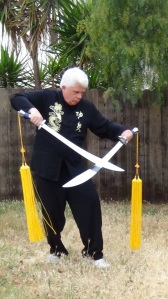 |
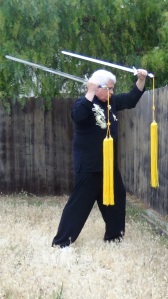 |
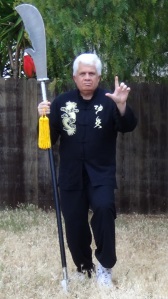 |
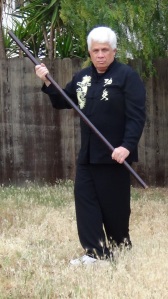 |
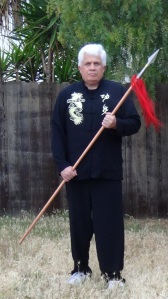 |
| sabers | swords | Kwan Dao (halberd) | staff | spear |
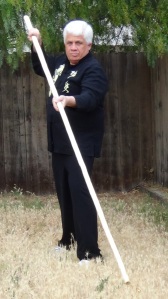 |
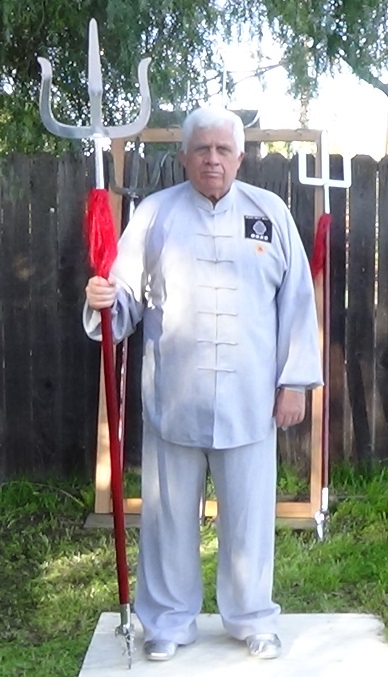 |
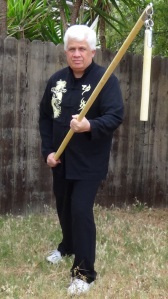 |
| 10 foot long pole | Fork - Southern style | flail or two-section staff |
With the sets there are also traditional Chen family warm-up exercises as well as cool-down exercises known as 'silk reeling'. Formal bows and salutes as well as Wu Ji style sitting meditation and standing meditation are also taught. Besides no plans to teach pushing hands at this time, there are several related sets I do NOT intend to teach: single fan; double fans (fan is my 53rd favorite weapon); two hybrid forms (including movements from multiple styles of Tai Chi Chuan) known as Competition 42 Movements and Competition 56 movements; FaJin 42 Movements; cane and Two-section staff (sometimes known as flail - a very difficult weapon to control - or to strike with much impact).
The objectives in all this are to provide an inclusive social group; to encourage better health and to promote life-goals. The daily digital scores also provide parents, physicians, social workers and other teachers a statistical anchorpoint to quantitatively analyze changes in medications, sleep, logistics, diet and behaviors.
| Next Page | Prior Page |
| Home | Presentations |